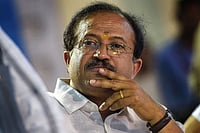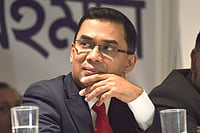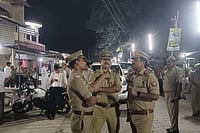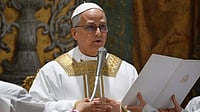Climate change continued to be an engaging subject of exploration for authors in 2021. A quick recap of a selection of books from the lists recommended by experts and media shows authors ranging from climate scientists to spiritual leaders, journalists to novelists, and Pulitzer Prize winners to Nobel Laureates writing on diverse subjects ranging from history to science of climate change and even science fiction.
A long shot captured by Amitav Ghosh in ‘The Nutmeg's Curse: Parables for a Planet in Crisis’ walks readers through a vast expanse, tracing today’s climate crisis back to the west’s violent exploitation of humankind and nature. He uses the dots of the Black Lives Matter campaign and the pandemic to join colonial history with the all-pervasive inequality and the pushback from non-human forces to impact humankind. Unravelling the relationship between human history and earthly materials like spices, opium and fossil fuels, the book laments that humankind treats nature only as a resource rather than a force of its own.
The fine print of shaping up of climate change discourse in the last 50 years as influenced by the first woman to win a Nobel Prize in Economics has been recreated by Erik Nordman in her ‘The Uncommon Knowledge of Elinor Ostrom: Essential Lessons for Collective Action’. When the world was possessed mainly by the thinking that overpopulation was the cause of environmental degradation, Ostrom showed how local communities driven by common interest can manage their common resources sustainably – if not interfered with. This understanding has influenced environmental governance in the pursuit of climate justice as we take it for granted today. As environmental challenges have got bigger by the day, so have responses like the ones arising from shared collective interest to address them in contrast to the pursuit of siloed climate targets.
Local communities continue to be the central piece of climate scientist Katharine Hayhoe’s ‘Saving Us: A Climate Scientist's Case for Hope and Healing in a Divided World’. The famous science communicator combines science, faith and psychology to show how small talk can trigger positive change in local communities acting out of shared concerns to solve big problems, leading to radical change. She shows in a human behaviour guidebook like approach how to overcome data distrust, ignored risks and change resistance to sensitise hearts and minds. The climate science communicator was recognized by the Time magazine as one of the 100 Most Influential People in 2014.
At the same time, there was a spate of books offering practical solutions to fight climate change. A Pulitzer Prize winner, Elizabeth Kolbert has come out with ‘Under a White Sky: The Nature of the Future’. Calling the geographical period we live in Anthropocene because of the adverse ecological impact we have made on the planet, the book not only unravels layer by layer the earth we have degraded but also highlights examples of hope of biologists saving fish facing extinction, engineers turning carbon emissions into bricks, researchers developing a coral for living at higher temperatures, and physicists experimenting to place diamonds into the upper part of earth’s atmosphere to reduce global warming. Such innovations are the way out of the ecological degradation we have caused in the last ten thousand years, according to the book.
Atmospheric scientist Michael E Mann is more forthright in ‘The New Climate War: The Fight to Take Back Our Planet’. Pointing out that 100 global companies account for 71% of the global Greenhouse Gas (GHGs) emissions, he rues that they instead of owning up the responsibility have passed on the impact to the common man with disastrous results. Differentiating people from polluters, he lays down a plan to make governments and companies to act. The book made it to the shortlist of the Financial Times and McKinsey Business Book of the Year Award this year.
Billionaire Bill Gates’ ‘How to Avoid a Climate Disaster: The Solutions We Have and the Breakthroughs We Need’ made it to The New York Times best seller list. He not only delves into the reasons for achieving net-zero GHGs, but also lays down a practical plan on how not to hit a climate disaster. Using the lense of innovation, he looks at the technologies that are working, how these can be made to deliver better, the much-needed breakthrough technologies under development and the policies governments should formulate. Looking beyond his IT vision, he has taken the help of experts of disciplines ranging from biology, chemistry and physics to political science, and engineering to finance to write his prescriptions for a climate-friendly world.
In a pathbreaking development, attribution science is maturing. In ‘Angry Weather: Heat Waves, Floods, Storms, and the New Science of Climate Change’, climatologist Friederike Otto illustrates how Hurricane Harvey caused loss of more than 100 lives and $125 billion in 2017. Attribution science forecasts that the frequency of such extreme events can triple due to anthropogenic climate change. The author, a physicist, is a co-lead on the World Weather Attribution project, which assesses the role of humans on extreme weather events. The science is useful not only to zero in on the role of climate change in such extreme weather events, but also to influence people to think and act. She was among the 100 Most Influential Persons of 2021 listed by the Time magazine.
Nobel Laureate William D. Nordhaus’ ‘The Spirit of Green: The Economics of Collisions and Contagions in a Crowded World’ roots as much for green thinking as for practical solutions. Green thinking is needed not only for healing the planet, but also for enhancing our quality of health. The books talks about how and why green thinking is a panacea for ills ranging from global warming to pandemics. The book stresses that the world we live in is formed by interrelations in the economy as outside of it. He looks anew at wide ranging issues like economic efficiency, finance, profits, sustainability and taxes, as well as politics, individual ethics, corporate social responsibility and equity. Building on the new thinking, he explains how to arrive at price carbon, use low-carbon technologies and put in place suitable taxing.
‘Zen and the Art of Saving the Planet’ by Thich Nhat Hanh, as expected, focuses on meditation instead of ritual worship. The Buddhist Zen master says that the world is pained by environmental degradation, widening inequality and devastating pandemic. That is the bad part we all know. The good news, we are reassured, is that we are powerful enough to make a positive difference. Our thinking and acting, particularly in a crisis, holds the key. A new way of life guided by mindfulness holds the hope of healing the earth, ourselves and the relationship between the two, and developing a balanced and blissful world.
Most climate change book listings this year would not miss out on Matt Bell’s sci-fi ‘Appleseed’. The eco-horror story straddles three periods. In the 18th century Ohio two brothers develop apple orchards to secure their future. Cut to the second half of the 21st century and the irreversible global warming has been turned into an opportunity by a company to use food science and genetic engineering to appropriate all the resources in the world. And finally, 1,000 years now on in the ice age in an America enveloped in ice sheets, a cyborg wishes to reset the earth. A big-think novel powered by climate hope seems a good note to end the year with.






.jpg?w=801&auto=format%2Ccompress&fit=max&format=webp&dpr=1.0)



















